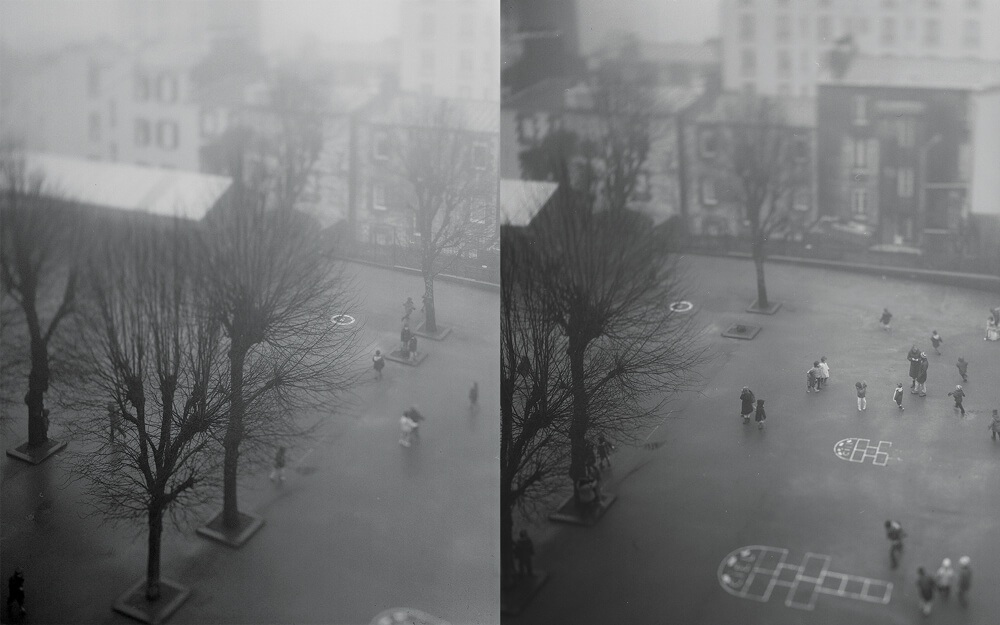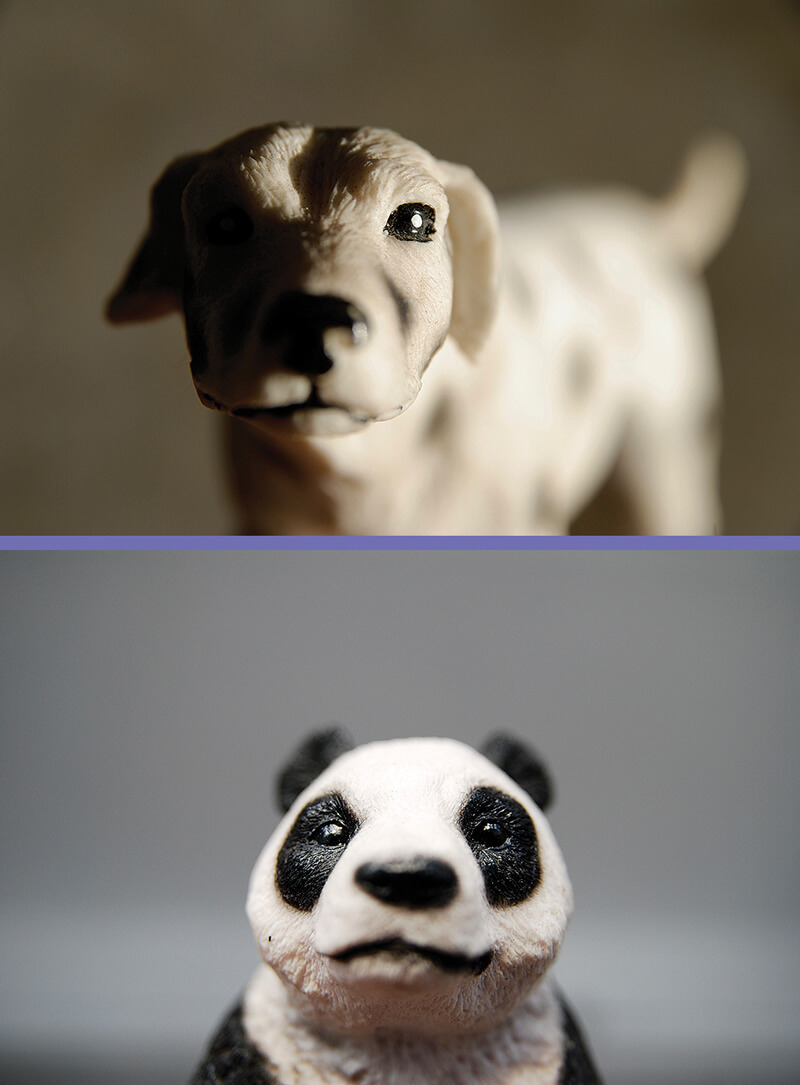Paris, 27 February 2016
Dear Miklos Gaál,
Do you remember me? I invited you to meet me at the cafeteria in the Whitechapel Gallery in 2012. I was living in London at the time on a six-month residency and had decided to listen to my friend Barbara, who said: “In London, only meet people you don’t already know.” And then I made your acquaintance.
But it was another friend, Yann, an artist, who had spoken about you after seeing the photographs I was taking in secret. I had started this photo project to pass the time; I had a studio in Montreal then and I often had to wait for the various artists who had rented the space to show up. Apart from the sound of the bell that rang from time to time in the school yard next door, the studio was large and silent – it seemed the space, too, was waiting.
My images are nothing like your incredible work. My photography is purely exploratory. I started by taking pictures of the walls, the floor – everything that surrounded me. Then the animal figurines I had picked up in flea markets, and which decorated my studio, became my models. I ended up doing several portrait series of them.
I’m still trying to recall how Yann made the link to you… oh, yes, I remember now. Around that time, I had been in Antwerp for two months and Yann had come to visit me. He seized the opportunity to do a photoshoot at the cathedral since his exhibition was coming up. I made us couscous and, in high spirits, showed him my little animals. I still remember how he laughed when he saw them. I must admit they do seem quite naïve, but he examined them attentively, and talked to me for a long time about the history of the portrait in photography, and about technique. He pointed out that my photographs seemed to move from anthropomorphism to object, and referenced your photographs, and the look of the figurines often found in them.
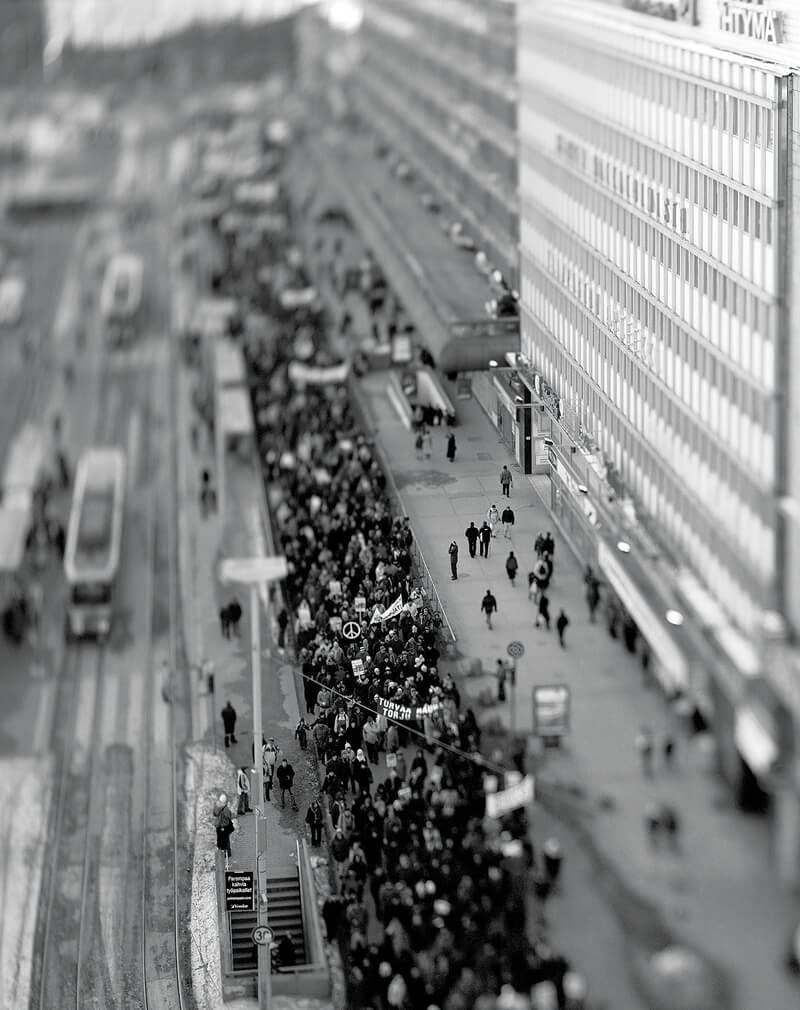
Fake space
Fake space produces holes and illogical continuity in a movement sequence, while in Miklos Gaál’s work, fake space produces a completely unexpected image. The viewer can no longer easily differentiate animate from inanimate. In these series the space looks frozen, as if there was a withdrawing of depth, a frozen time. This work is a good example of translating a concept in its own medium and practice. Gaál creates a fake space on its own terms, that belongs to the field of photography.
I’m not trying to compare my work to yours from a technical or artistic point of view. We don’t use the same methods, and the quality of your images is of a completely other order. The comparison I’m drawing here is limited to space, and I could say that your work with space is symmetrically opposed to what I do. While your photographs seem to suck up the space of the image, erasing depth and causing the photos to look like maquettes, my images instead give life to the little animal figurines.
Your photographs are superb, but they are also – cramped, somehow, as though there’s some space lacking. Do you know the book Flatland by Edwin A. Abbott (1884/1998)? I think you’d like it. Your locations seem to be pulled directly from the book. Abbott describes the phantasmagoric life of geometric figures in a flat universe where depth doesn’t exist. Space in your photographs and in Flatland is solid, opaque, and completely fixed, as though a layer of time had slipped beneath the image and then been removed.
Your photographs appear as flat visual objects – the space in them and the objects within are full, and the very idea of positive and negative space becomes obsolete. The artist Gordon Matta-Clark translates a similar quality in his photographic series of “building cuts.” His work is nothing like yours, but he, too, produced superficial spaces, surface places that look like maquettes. In the book Object to Be Destroyed by Pamela M. Lee (2000), we see various cuts by Matta-Clark around the bingo hall in Niagara Falls in 1974. These houses appear to have been cut out with scissors and then glued onto a blank sheet of paper. They look like a series of images that have been flattened with an iron.
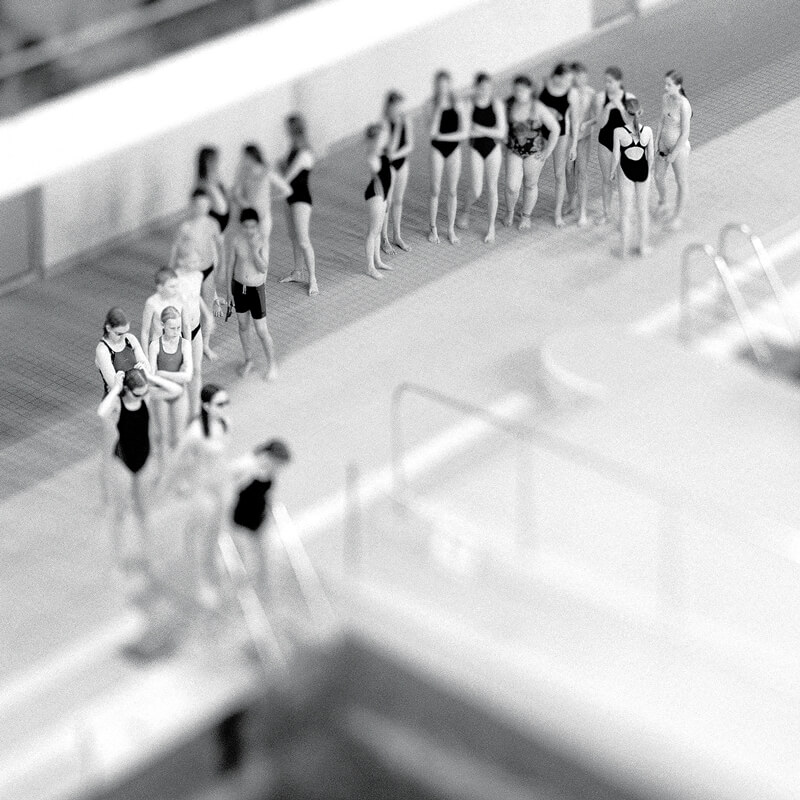
Fake body
The flattened spaces and frozen figures created by the photographer Miklos Gaál challenge our attention when looking at the image. At first, it is easy to see a maquette, but through a fine observation, what seems to be the photography from a constructed scene in a model, was in fact taken from a live situation. This visual doubt defies our perception and arouses curiosity on our part. We might decide to fool our own perception by going back and forth between what we saw at first sight and the image in progress. The body in these photographs appear as flat visual “objects” and figurines.
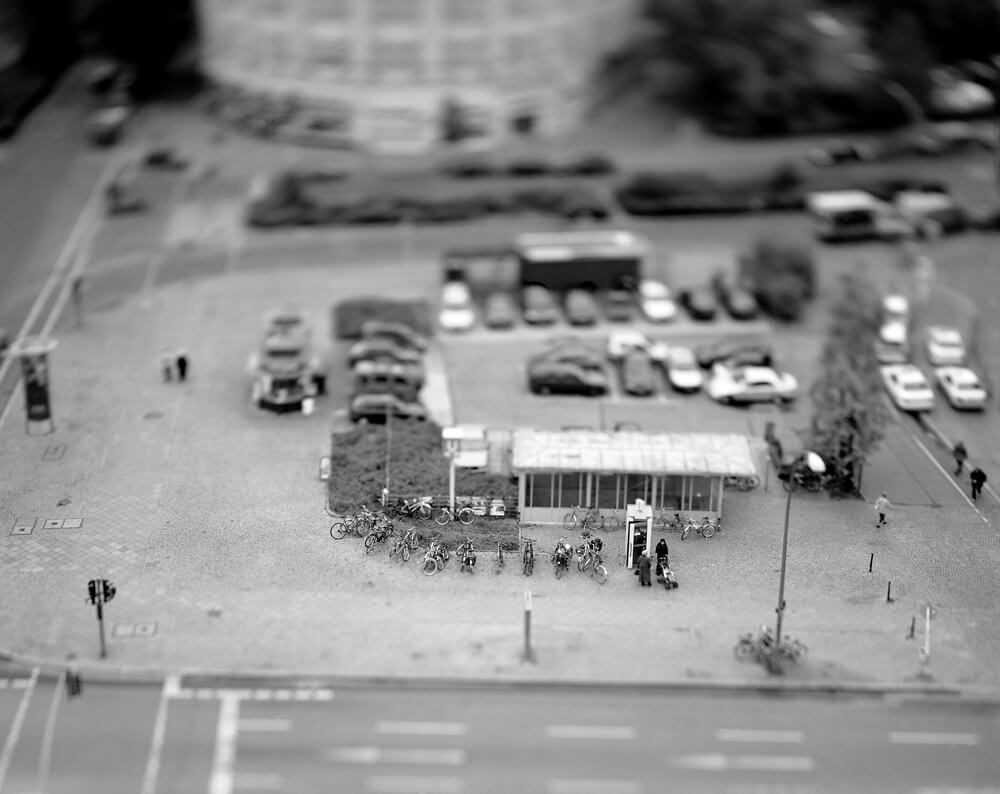
We often sum up the choreographer’s job as work on space and movement, and to an extent I agree, but this description always bothers me a little, because it doesn’t really say much in the end. As I write to you, my thoughts about space are coming clearer, and if you asked me now “what do you do?” I would say that I work on spatial depth, and that a large part of my time is spent destroying and reconstructing it. And so everything I do in my work takes on a whole new meaning, and my artistic mission suddenly becomes simple: I present objects, images, ideas, and bodies outside of depth. Changing direction, short-circuiting, destroying, playing with dismantling and reconstructing spaces is, on the whole, what I’ve been doing for years now. My choreographic piece 0101 (2007) is an example of this way of working. I tried with this piece to work with a fake body, a concept that empties out a body’s depth in a world like Flatland, with individuals who are imagined without viscera, weightless. But these fake bodies are also your swimmers “sous-vide” in the pool, in your series Swimming Lesson. And they are Lisa and Michael, the protagonists in the film Anomalisa (2015) by Charlie Kaufman. Have you seen it?
Anomalisa is the quintessence of the fabricated, with bodies and objects that are fabricated, but also movements that are fabricated through the technique of stop motion, in a fantastical world beyond any naturalism. In dance as in theatre, we often speak of a performer’s presence, and in French we refer to actors as “bêtes de scène” – beasts of the stage. The figurines of Lisa and Michael, too, are veritable bêtes de scène. An object can have presence, and a space can, too – your work proves it. My images of animals have remained inside a computer, just like my animal knickknacks have remained inside a box. I can see a link between this box and your images in which space has left the scene. In your images, individuals without spaces transform into anonymous, isolated characters. I am trying here to understand the flatness in your images – a quality that devitalizes everything that should, in principle, be alive. And then we, the viewers, search for the thing that’s missing.
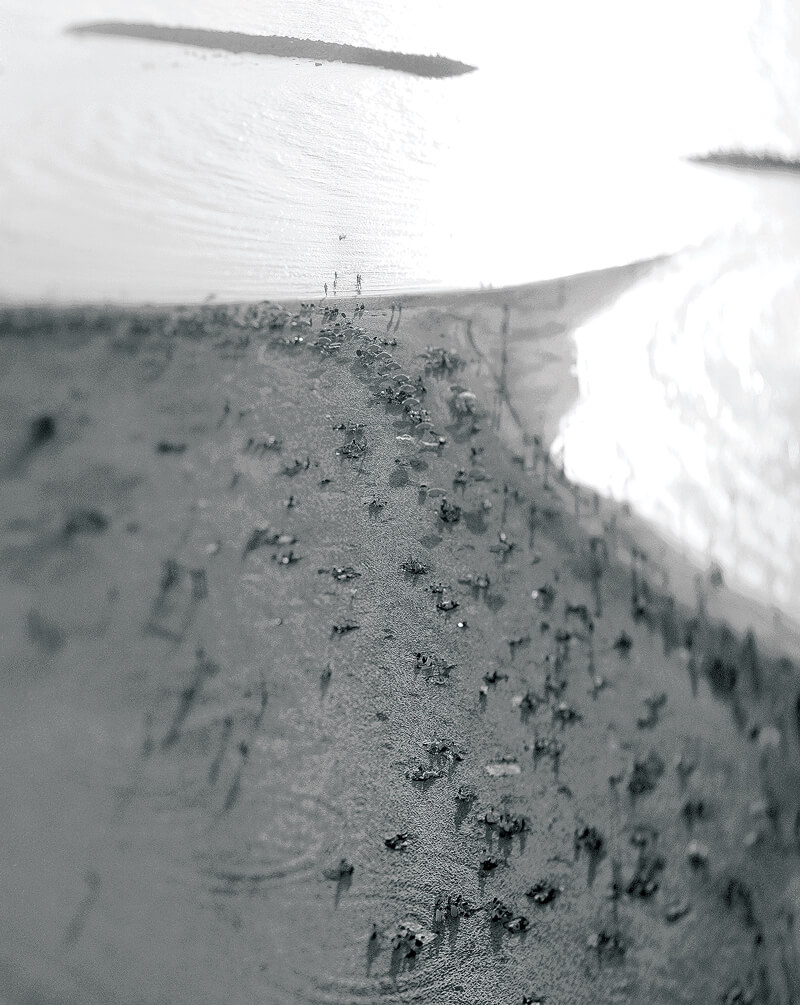
I’m thinking now of another concept in the family of fake things: fake space. In my work, fake space produces holes and illogical continuity in a movement sequence, while in yours, fake space produces a completely unexpected image. The viewer can no longer easily differentiate animate from inanimate. In this way, you are inventing a fake space that belongs to the field of photography.
I know streets, I know parks and pools, but your streets, your parks and your pools are completely unrecognizable to me. I don’t understand them. They are fictional spaces, anti-naturalist, very worked-over, and from which a space has been removed. The subjects in your photographs seem themselves to be taken aback, and caught, as though in a déjà vu, but a déjà vu that is all your own.
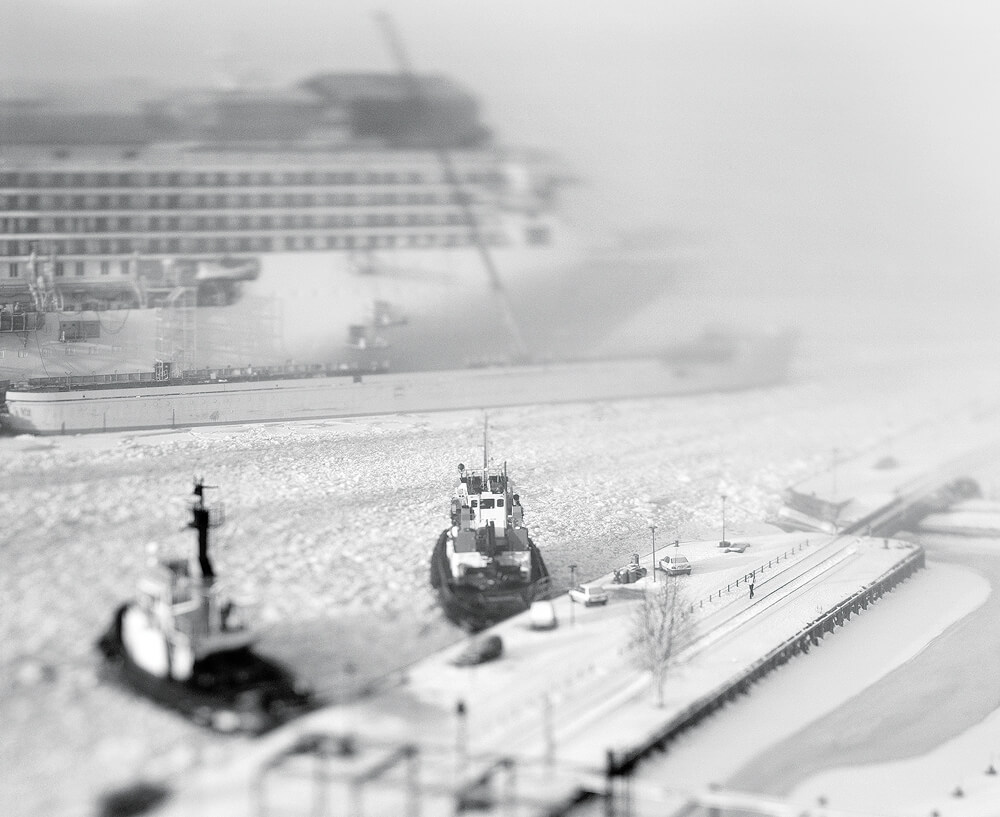
When someone looks at your photographs, they enter into the image or the reality as you saw it, and at that precise moment the subjects, who should be photographed individuals become visual objects, déjà vus of your perception of the space you make us experience in turn. This makes me think of Alberto Giacometti, who kept doing his drawings over and over, saying they didn’t correspond to what he had seen, and that he’d let himself be tricked by his knowledge of space. And a rather odd question comes to mind: is the experience of vision that Giacometti sought, just as you do, and other artists too, not similar to déjà vu? Isn’t artistic work based on this desire for synchronization between our perception of the world and ourselves? Does this mean that each time we don’t experience déjà vu – which is to say, most of our lives – we are experiencing a desynchronized world? Isn’t our experience of what we call life in fact a desynchronization, at heart?
My little animals are no longer completely alone – they live in a space shared with yours, Miklos Gaál, and with Lisa and Michael they form the community of fake bodies from Flatland.
Lynda
